|
John Tyman's Cultures in Context Series Torembi and the Sepik A Study of Village Life in New Guinea |
|
Topic No. 10: Clothing |
|
John Tyman's Cultures in Context Series Torembi and the Sepik A Study of Village Life in New Guinea |
|
Topic No. 10: Clothing |
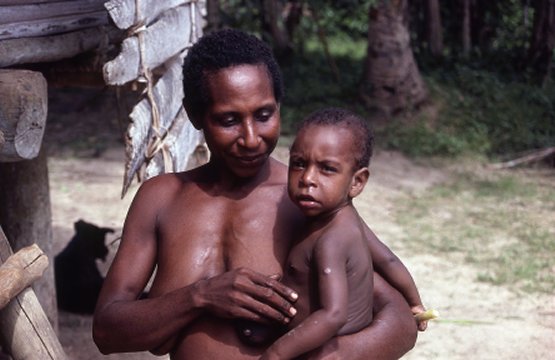 |
| 159. In a climate where the temperature, even at night, rarely drops below 24 degrees Celsius, there is little need for clothing as a protection against cold. |
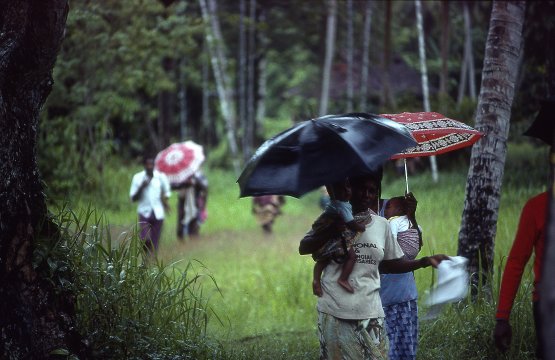 |
| 160. Nor, traditionally, did they have need of raincoats or umbrellas. It is reasonably warm here even when it rains; and if you’re not wearing clothes you’ll dry out quickly in any case! |
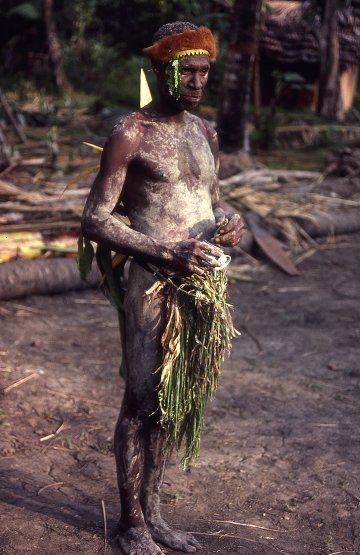 |
| 161. Custom required, however, that though men and women could both go topless, the lower part of their bodies should be covered. Men simply hung bunches of leaves from cords around their waists. |
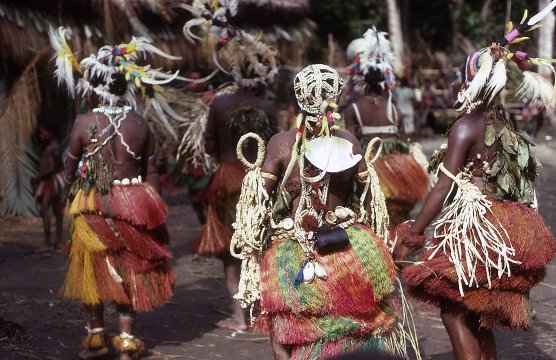 |
| 162. Women wore what are generally referred to as ‘grass skirts’ … though they are not made from grass, but from the shredded leaves of the sago palm. (Dancers at sing sing) |
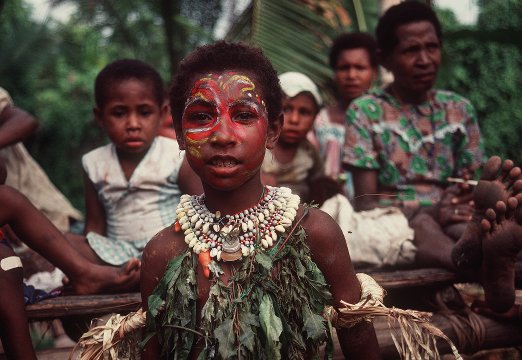 |
| 163. Little clothing, therefore, was really needed: but in every culture people also wear clothing for display … to emphasize their rank, their wealth, their beauty, or their skill in making clothes. |
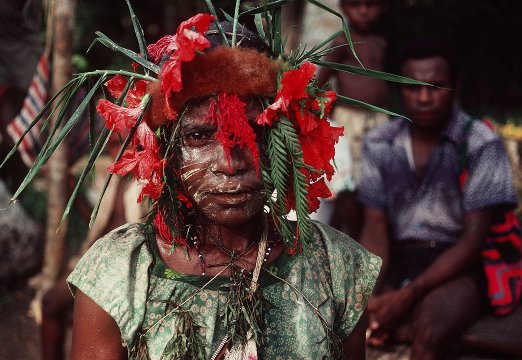 |
| 164. The need to show off is most obvious when people dress for special occasions. Just how people decorate themselves, though, depends on what is available and on what they can afford. |
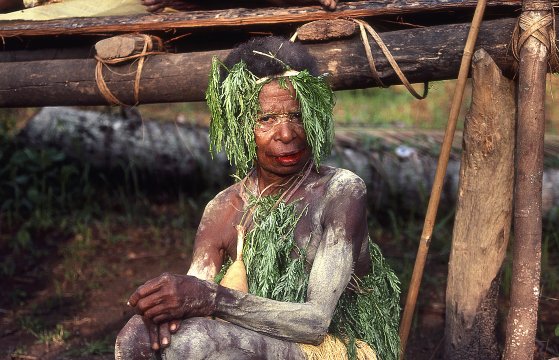 |
| 165. In Torembi, no one bought clothes till recently, they made them from materials available locally… leaves especially. |
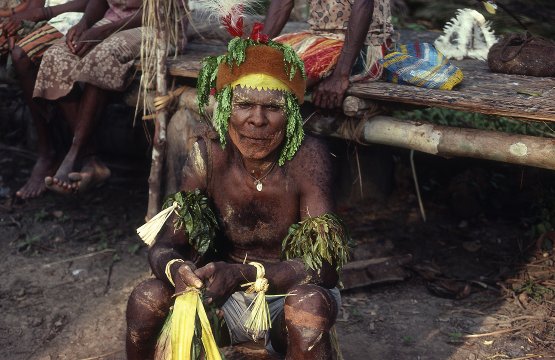 |
| 166. They also used the fur of the cuscus, or possum … though, traditionally, orange headbands like this were worn only by those who had killed a man in battle. |
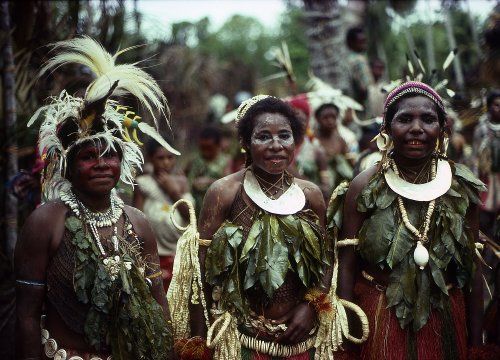 |
| 167. They also used shells, obtained from coastal tribes through trade; and produced vests from string they made themselves. |
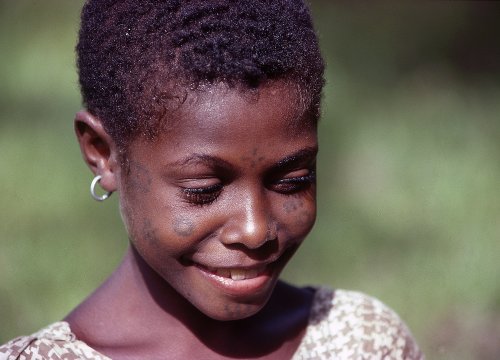 |
| 169. Others -- both men and women, young and old -- simply marked the surface of their skins with tattoos and/or make-up. |
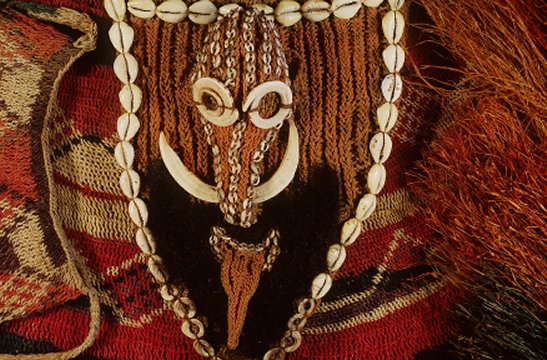 |
| 170. Both men and women carried their few possessions in ‘bilums’ -- strings bags -- which were also home made. |
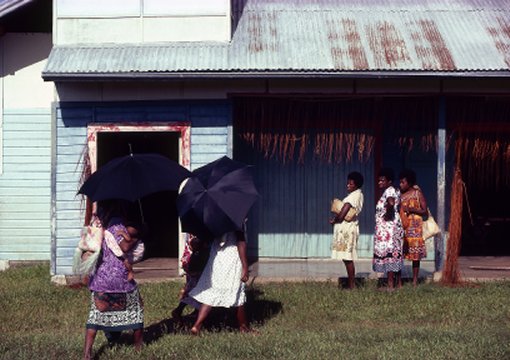 |
| 175. Umbrellas, too, are popular today … providing shade on a hot day, as well as protection from rain. |
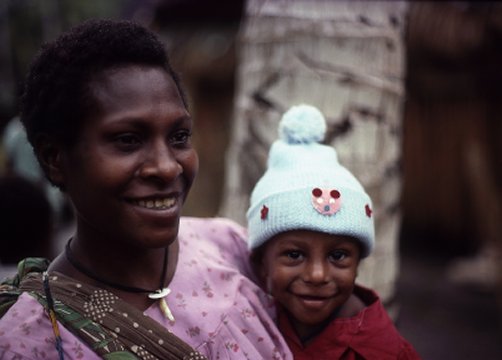 |
| 177. This explains the use of sweaters and the wearing of ski caps at the Equator on a oppressively hot and humid day! |
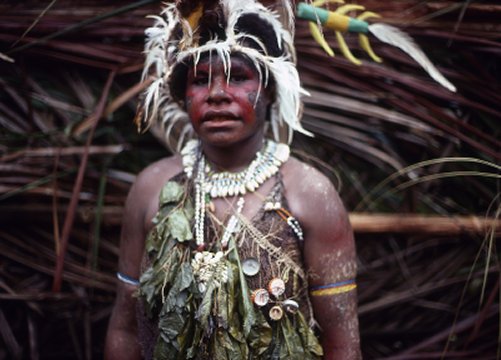 |
| 178. Yet people here still save household items other people would throw away, and use them as personal decorations … like the caps from beer bottles. |
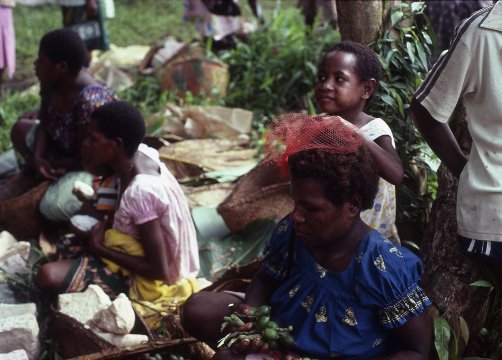 |
| 179. Also onion bags, used here as a hair net. Almost nothing is wasted. When you have little, you make the most of everything. |
![]()

![]()
Back to
Cultures in Context Intro: Photos & Recordings
![]()
Text, photos and recordings
by John Tyman
Intended for Educational Use
Only.
Copyright Pitt Rivers Museum,
Oxford University, 2010.
Contact Dr.
John Tyman for more information regarding licensing.
![]()
Photo processing, Web page layout,
formatting, and complementary research by
William Hillman ~ Brandon, Manitoba
~ Canada
www.hillmanweb.com